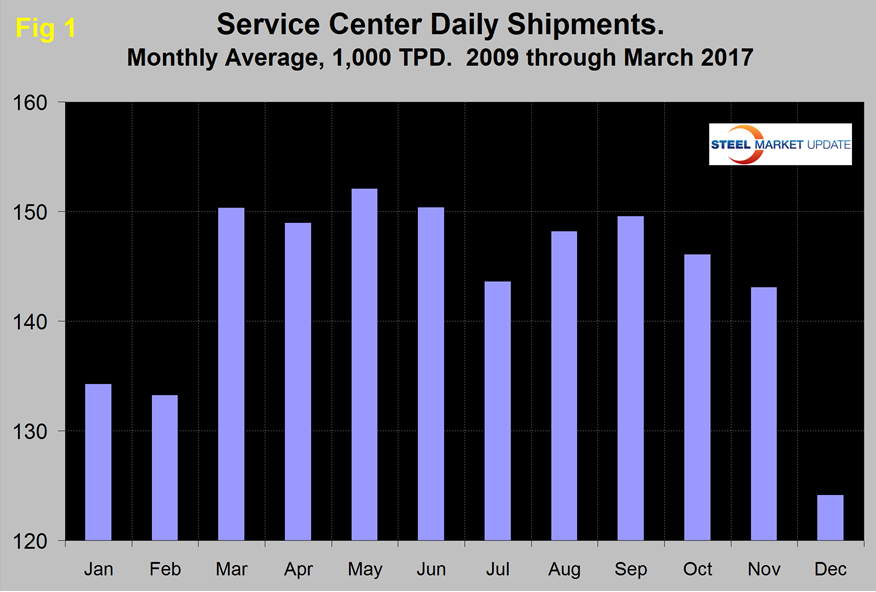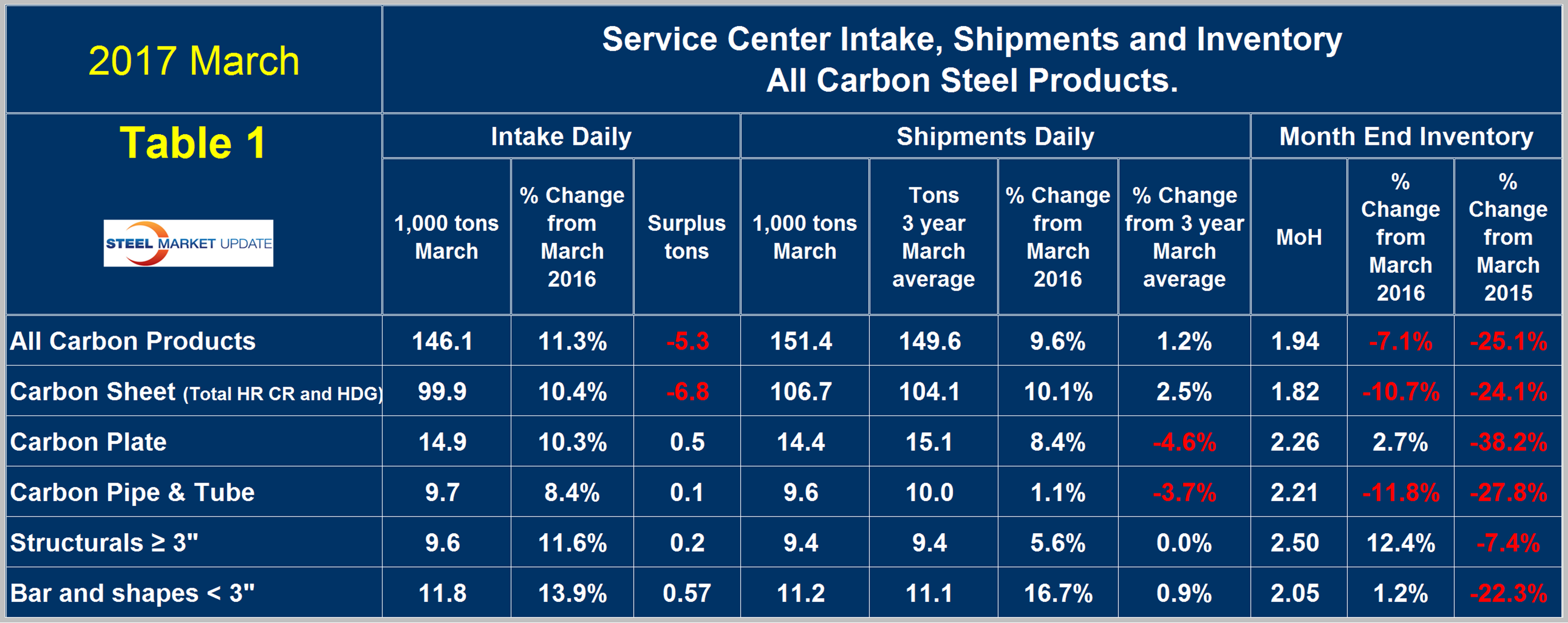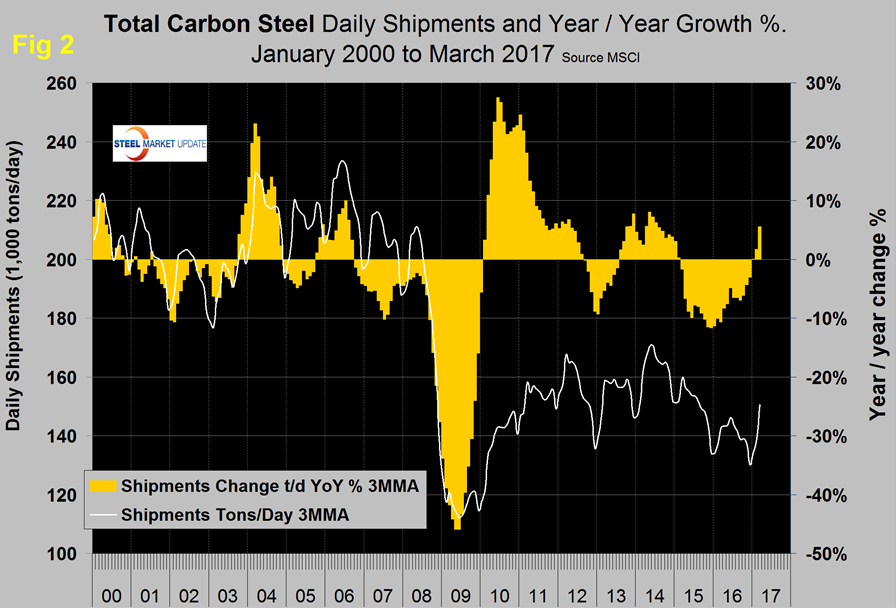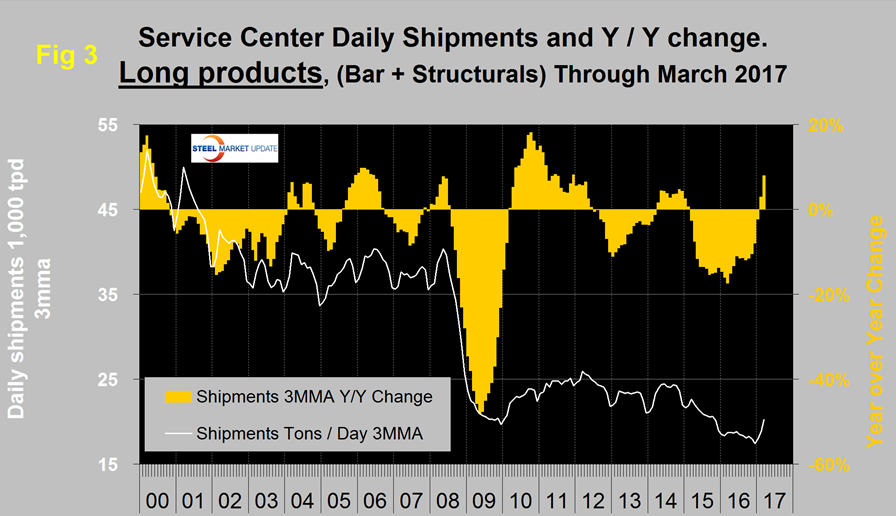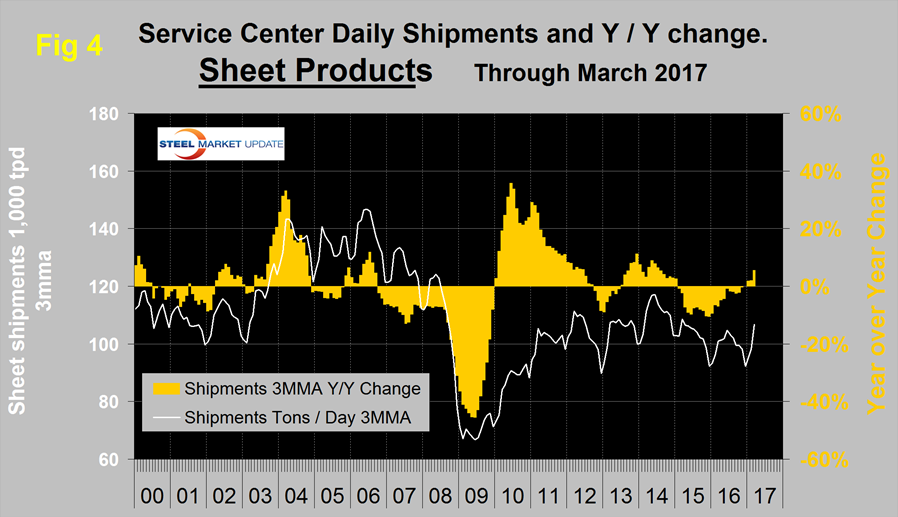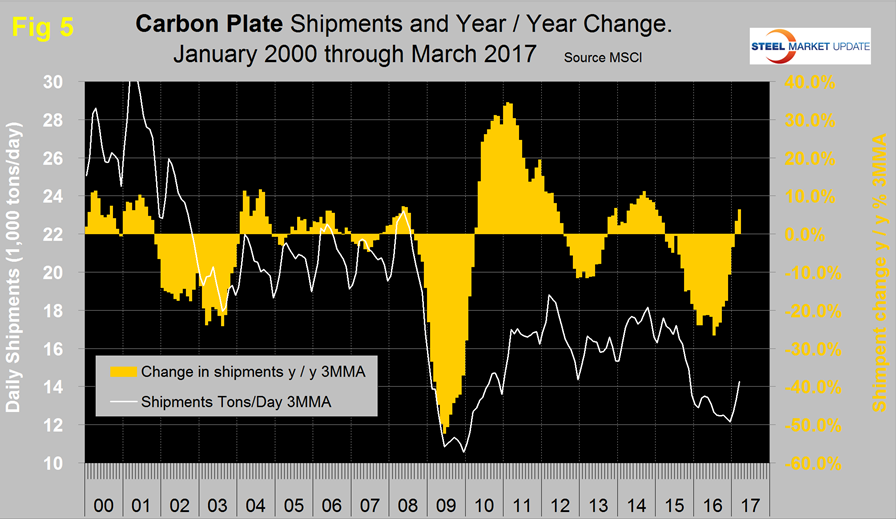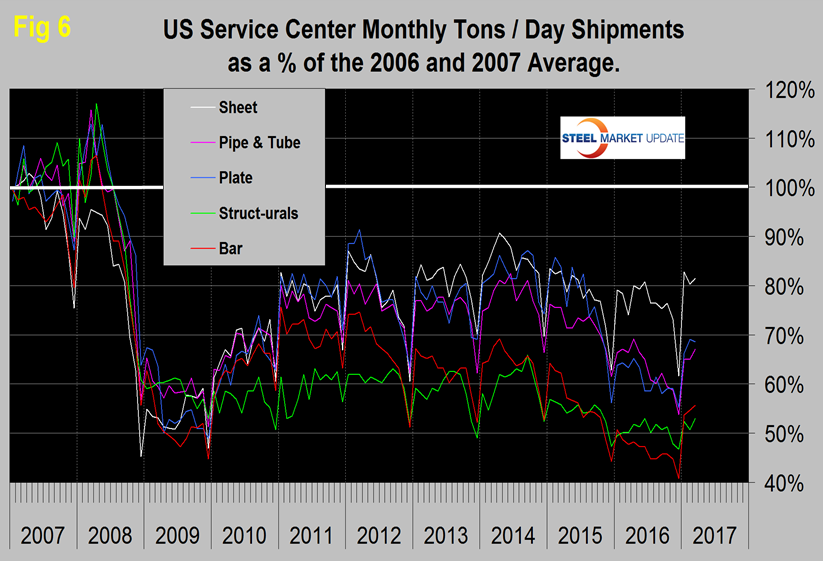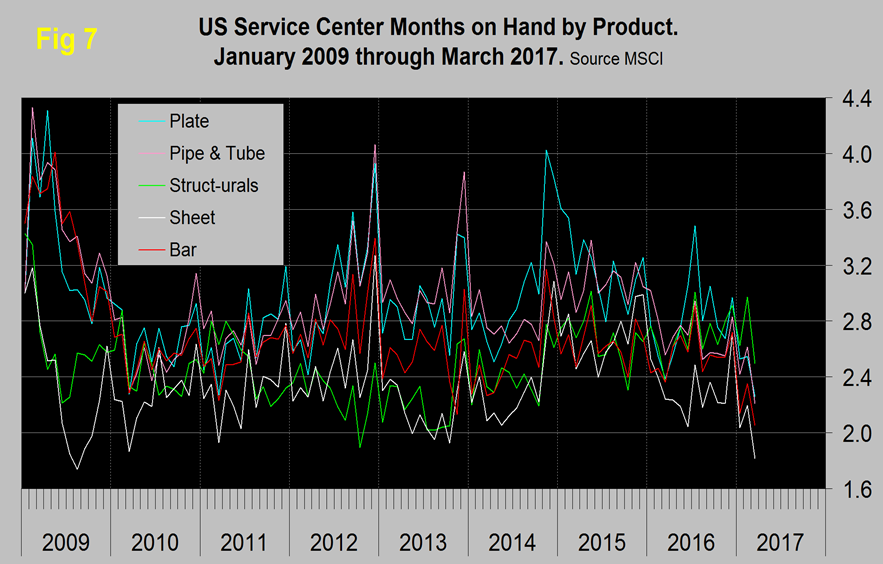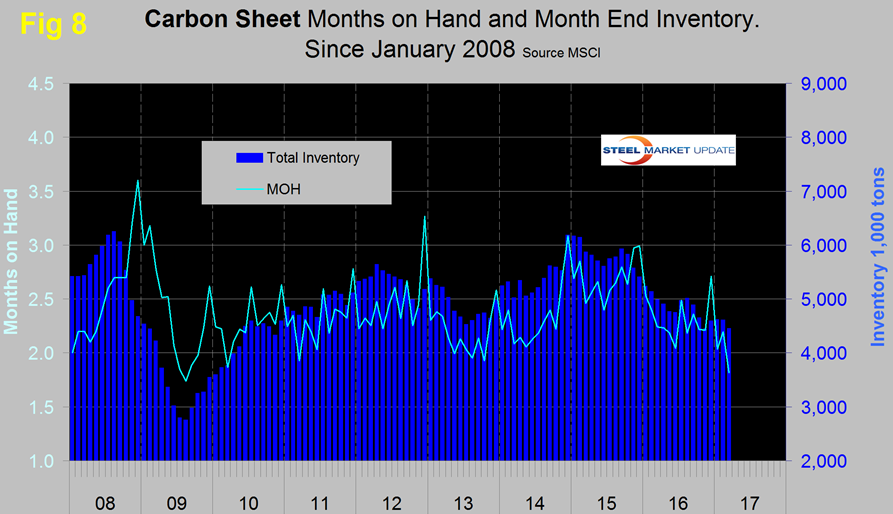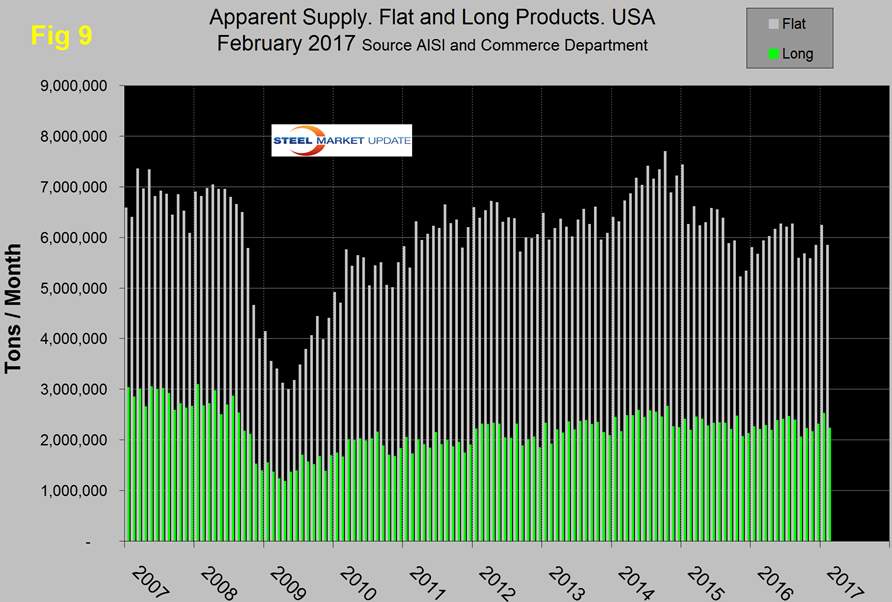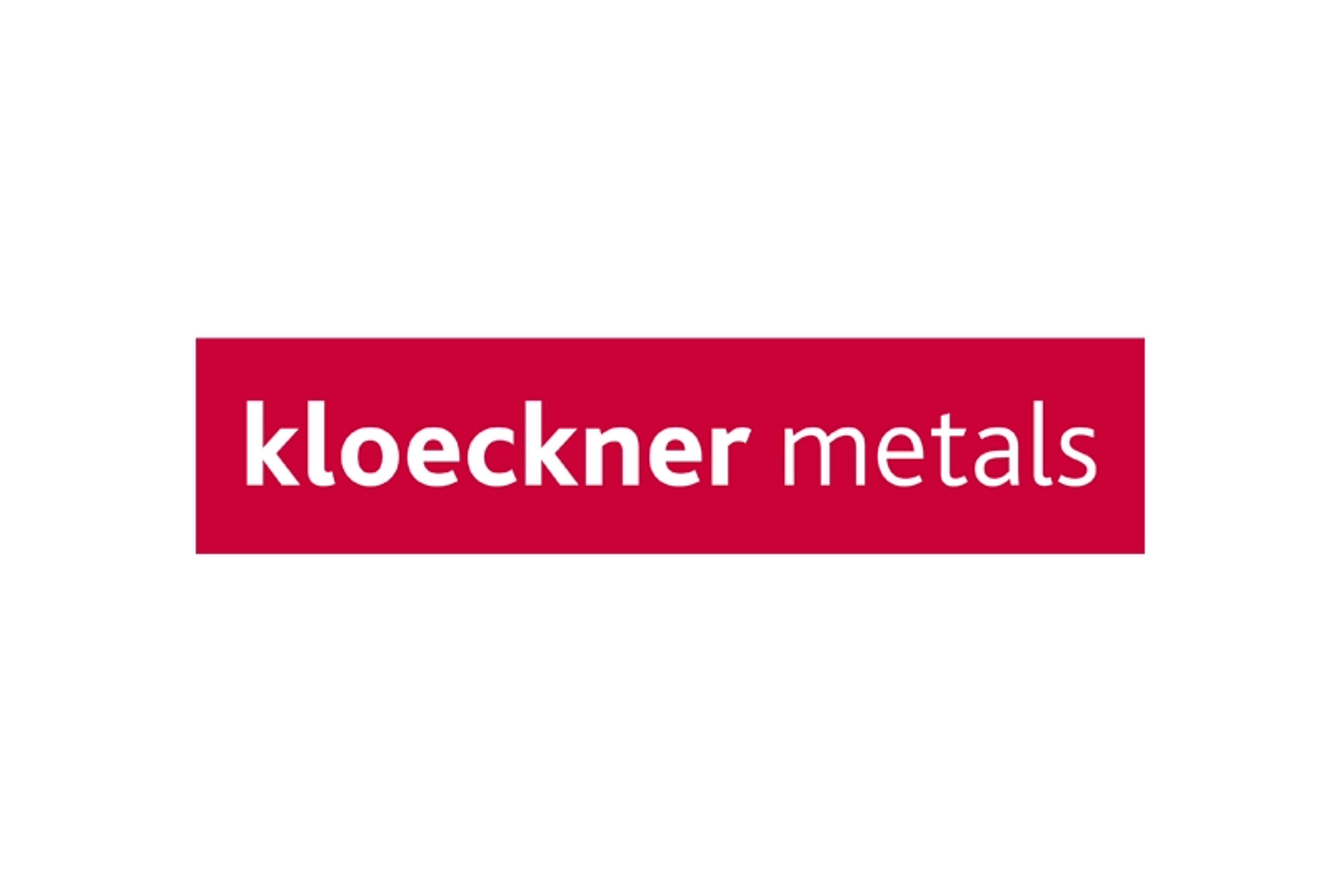Market Segment

April 18, 2017
Service Center Intake, Shipments and Inventory through March 2017
Written by Peter Wright
At first glance this was a good report but that impression diminished on closer examination. Year over year the report was quite good but the number of shipping days increased by three and the normal March month over month shipment surge was very muted. Daily shipments increased by 1.7 percent from February. Since 2009 on average, March has increased by 12.8 percent. Carbon steel shipments were 151,400 tons per day. The number of shipping days increased from 20 to 23.
![]() Intake and Shipments
Intake and Shipments
In March total carbon steel intake at 146,100 tons per day (t/d) was 5,300 tons less than shipments. This was the first month of deficit after three months of surplus. Total sheet products had an intake deficit of 6,800 t/d in March. In the last six months, four have had a sheet input deficit including February and March.
Total service center t/d carbon steel shipments decreased from 151,500 tons in January to 148,900 in February and back to 151,400 tons in March. MSCI data is quite seasonal and we need to eliminate that effect before commenting in detail on current results. Figure 1 demonstrates this seasonality and why comparing a month’s performance with the previous month is usually misleading.
Normally there is a strong surge in March but that didn’t happen this year. This is the only time in the SMU analysis that we report a month over month change. In the analysis described below we report year over year changes to eliminate seasonality, our intention is to provide an undistorted view of market direction.
Table 1 shows the performance by product in March compared to the same month last year and also with the average t/d shipments for this and the two previous months of March.
We then calculate the percent change between March 2017 and March 2016 and with the most recent three year March average. March this year was up by 9.6 percent from March 2016 and up by 1.2 percent from the three year March average. The fact that the y/y growth comparison is better than the three year comparison suggests that momentum is positive. Shipments of all products were up from March last year and shipments of all products except plate and tubulars were up from the three year average. Figure 2 shows the long term trend of daily carbon steel shipments since 2000 as three month moving averages (in our opinion the quickest way to size up the market is the brown bars in Figures 2, 3, 4 and 5 which show the percentage y/y change in shipments.)
In January on a 3MMA basis there was positive y/y growth of 0.07 percent which improved to 9.6 percent in March. These were the first positive y/y result since March 2015.
Figure 3 shows monthly long product shipments from service centers as a 3MMA with y/y change.
Growth was positive 2.9 percent y/y in February and 8.0 percent in March. These were the first positive result in two years and followed a 2.3 percent contraction in January. Sheet and plate have performed very differently in the last two years. Sheet and plate products both had a good post-recession recovery. Both had some contraction in 2013 and growth in 2014 but since early 2015 they have diverged dramatically with plate performing much worse than sheet. Figures 4 and 5 show the 3MMA of t/d shipments and the y/y growth for sheet and plate respectively.
In 2006 and 2007, the mills and service centers were operating at maximum capacity, Figure 6 takes the shipments by product since that time frame and indexes them to the average for 2006 and 2007 in order to measure the extent to which service center shipments of each product have recovered.
Each year all products experience the December collapse and January pick up. The total of carbon steel products is now at 71.3 percent of the shipping rate that existed in 2006 and 2007, with structurals and bar at 53.0 percent and 55.7 percent respectively. Sheet is at 81.5 percent, plate at 68.6 percent and tubulars at 67.1 percent.
Inventories
March closed with months on hand (MoH) of 1.94 for all carbon steel products, which was the lowest level in 13 years (since March 2004). Compared to March last year MoH in total were down by 7.1 percent led by sheet products which were down by 10.7 percent to 1.82 months. Plate and long products had an increase in MoH year over year. Figure 7 shows the MoH by product monthly since March 2009.
All products had a surge in months on hand in July 2016 driven not by an inventory volume increase but by a decrease in monthly shipments as a result of a small number of shipping days. By the same token, the low MoH in March was influenced by the high number of shipping days. Figure 8 shows both the month end inventory and months on hand since March 2008 for total sheet products. The total inventory tonnage of sheet products has been in decline for 18 months.
SMU Comment: In Figures 2, 3, 4 and 5, the white lines show t/d shipments. There was a decline in shipments for total carbon steel products since mid-2014 but the y/y decline halted in January through March this year. This was true for all product groups. Figure 9 shows the total supply to the market of long and flat products based on AISI shipment and import data through February which is the latest data available.
Total supply of long products is much better than the MSCI report of service center shipments with a volume almost double the recessionary low point. For flat rolled the MSCI and AISI data have been in reasonable agreement with one another.
The SMU data base contains many more product specific charts than can be shown in this brief review. For each product we have ten year charts for shipments, intake, inventory tonnage and months on hand. Some readers have requested these extra charts for a particular product and others are welcome to do so.



